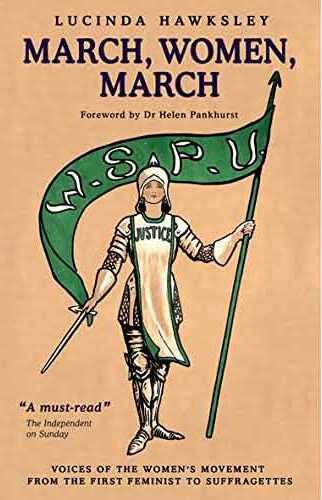Although we are past St David’s Day it is still mainly dark and cold here even if the occasional flash of sunshine has started to hint towards the onset of spring. It must be close now, we have put away the unsold Valentine’s Day cards (to the sound of bitter weeping from the un-carded) and bedecked the card spinners for Mothers’ Day (Sunday March 15 – don’t you forget, you only have the one mother). Daffodils must surely be just around the corner.
I could do with the mood lift. It has been a difficult month and my normal escape route via the pages of a novel has been challenged by the necessity to finish War and Peace before the next book group meeting. As a word from the wise, if you are in need of a cheer-up The Battle of Borodino is surprisingly light on chuckles. Have you heard the joke about Russian novels? The difference between an English, a French and a Russian novel is thus. In an English novel, two people fall in love but are married to other people so they do nothing but are sustained by a feeling of duty done, and mild regret for what might have been. In a French novel two people fall in love, have a lot of very explicit sex and end up hating each other. In a Russian novel two people neither love nor hate each other and after 1367 very sad pages, they die.
Actually I have thoroughly enjoyed War and Peace, it must be thirty years since I last read it and it is so worth a re-visit – do try it. For the social historians amongst us it is interesting to compare Tolstoy and Dickens, both fabulous chroniclers of their own time but so different in style and approach: caricature and humour versus drama, spirituality versus sentiment but both tackling huge social issues. Let me know which you prefer. Now for really grim Russian novels you can’t go past Solzhenitsyn’s The Gulag Archipelago…
Along with the daffodils and crocuses we also have an election to look forward to. Our quinquennial opportunity to change our world, a chance for the people to speak and their voices to be heard. It is also a moment to give pause and think about the opportunity to vote which was so hard won. The juxtaposition of the election and the release later this year of the movie Suffragette starring Helena Bonham Carter and Meryl Streep has resulted in a panoply of riches in the women’s history section. We have Emmeline Pankhurst’s autobiography Suffragette: my own story which you should read now to be up to speed when the movie comes out. Emmeline was an amazing woman named by Time magazine as one of the 100 most influential people of the twentieth century (we may have to skip quickly past the inclusion of Lucky Luciano and Bart Simpson in the list…). Her advocacy of extreme tactics such as violence and arson in pursuit of her goal is still controversial.
Lucinda Hawksley’s March women march uses diaries and letters to paint a history of the suffrage movement from the passing of the Marriage and Divorce Act in 1857 to the final granting of the vote in 1928 (1928 – that is less than a hundred years ago, think about it). If you would like an insight into the impact of the act read The criminal conversation of Mrs Norton. Caroline Norton (nee Sheridan) was divorced by her husband for adultery (no they weren’t just chatting) and although there is very little doubt that trapped in an unhappy and violent marriage, she had taken a lover she did not deserve to be socially ostracized, made penniless and denied access to her children. The rest of her life was spent using her pen and her connections to pursue women’s legal rights and her efforts greatly assisted legislation including The Infant Custody Act and the Married Women’s Property Act.
And for those with an unusual sense of humour we can even sell you an apron or tea towel in the purple and green colours of the WSPU (Women’s Social and Political Union). Can you feel your great-grandmother spinning in her grave? Was it for this we endured hunger strikes and imprisonment?
If you like your history tempered by fiction then do read Half the human race by Anthony Quinn. Don’t be deceived by the truly dull and anodyne cover (the previous edition used a more militant drawing of a suffragette in purple and green – this is a ghastly stock photograph that looks like it came from the back catalogue of Mills and Boon.) The heroine, Constance Callaway, is heavily involved in the woman’s suffrage cause just prior to the outbreak of the First World War and the descriptions of imprisonment and the treatment of hunger strikers is harrowing. Yes there is a romance in there too (with a cricketer of much more conventional opinions) but it is more about the difficulties of two individuals with divergent opinions meeting at a key turning point in history than mooning about in the sunset.
